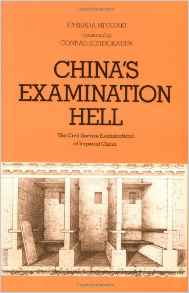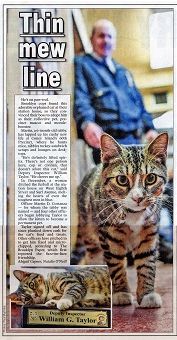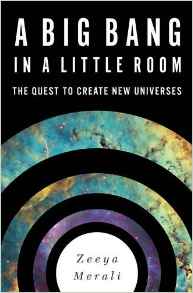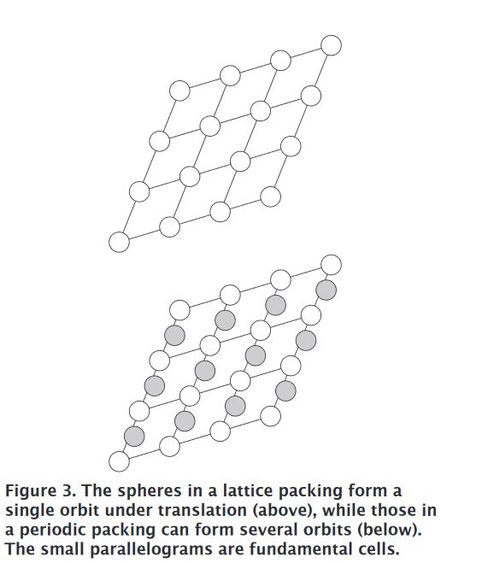


03/01/2017
Wanted: an Alt Right Style Book. Did I coin the phrase "Cold Civil War"? It’s possible. I've been using the expression for four years. A Google search on the term finds "about 23,800 results," none of them earlier than that in the half-dozen Google pages I could be bothered to view.
Whether I coined it or not, the expression is now definitely current, as that 23,800 number testifies. A VDARE.com reader spotted it recently in the weekly vlog of Chris Farrell at Judicial Watch, February 21st edition. Chris:
Welcome to the Cold Civil War. You studied the American Civil War in school; some of you are old enough, like me, to have lived through the Cold War; Americans today face a Cold Civil War.Armed groups are not yet engaged in open combat, but the country is fracturing in dramatic ways. Sometimes toodramatic: there are media figures in front of television cameras in a near-perpetual state of fear and anxiety, and they hope to contaminate you with the same hysteria …
I can remember why I first started using the phrase: to point up the fact that for all the fussing about race in America, the real division in our country is not racial. Rather it is, as I said on Radio Derb last year:
between two big blocs of white people who can’t stand the sight of each other: Goodwhites and Badwhites. The Goodwhites draft in battalions of colored people to dig latrine trenches and feed the horses, and to act as figureheads for Goodwhite values, as with our [then-] current President.That’s what it is, and that’s how I most commonly refer to the two sections: Goodwhites and Badwhites.
Nobody’s passions are stirred by thinking about other races in the aggregate. What gets our juices flowing is thinking about our own status ranking among people of our own race. That’s what supplies the driving energy, the will to combat, in the Cold Civil War: How do other white people see me? No white person gives a fig about how blacks see him. Who cares what blacks think?
I may have coined "Goodwhite/Badwhite" too; can’t be bothered to search it. Occasionally I vary the descriptors to Tutsis and Hutus, again sticking to the idea that the energizing division is between groups of the same race.
That excellent blogger The Z-Man prefers "Cloud People" and "Dirt People." He thinks he may have coined those terms, but like me with "Cold Civil War," he’s not sure.
The Cloud/Dirt nomenclature is neat, but it obscures the intra-racial factor that, according to me, is a key feature of the Cold Civil War, as it was of the hot one.
That aside, I think it would help if those of who write honestly about the Cold Civil War could settle on which terms we want to use:
What we need, in fact, is an Alt Right Style Book to bring some uniformity to nomenclature and usage out here among the Deplorables. It needn’t be as long as the New York Public Library Writer’s Guide to Style and Usage, my 1994 edition of which runs to 840 pages. You could probably get the essentials into just a pamphlet.
I'll do the job if someone will pay me.
Out of the frying-pan into the Ring of Fire? I've sometimes ruminated in my diaries about finding a bolt-hole to escape to if civilization collapses. Uruguay, I've said, looks pretty good, except for the chore of having to learn Spanish.
The subject of bolt-holes seems to be on the minds of our tech billionaires. Like me, they favor the Southern Hemisphere as the best possibility for a, er, safe space. They have picked a different country, though.
Silicon Valley tech leaders are snapping up property in Australasia as they believe that the apocalypse is near.Apocalypse aside, there is a current political dimension to this phenomenon. Peter Thiel, who is part of this movement, has been given New Zealand citizenship. He has bought a $10 million estate in New Zealand’s South Island.The elite business people have identified Queenstown on the southern island [of New Zealand] as a safe haven if the worse does happen.
The richest the U.S. has to offer have chosen the picturesque mountain town to reside in if tensions continue to mount in the US, with many fearing a nuclear war, political turmoil and terrorism. [APOCALYPSE WARNING: Billionaires buy up land in NEW ZEALAND as they look for safe haven by Sean Martin; Daily Express, February 13th 2017.]
The Kiwis are an egalitarian lot with exceptionally sensible immigration laws. To get residence — never mind citizenship — you have to show you bring something positive to the country, and nothing negative. The New Zealand authorities once refused a settlement visa to a British woman on the grounds that she was too fat. And the adjective "positive" there has not usually been taken to encompass just a big box of money.
The grant of citizenship to Thiel therefore raised eyebrows, and there has been to-ing and fro-ing in the Kiwi press about it.
Politics aside, I think Thiel has made a good choice. He doesn’t have to learn Spanish, see? My old Dad, who lamented that returning home to Britain from New Zealand in 1930 was "the worst mistake I ever made," is surely smiling down his approval from the Other Place.
I just hope that Peter Thiel and these other tech moguls know that New Zealand sits smack-dab on the Ring of Fire.
Elite Overproduction. The Daily Express link in that previous segment, if you read down the linked story a bit, mentions anthropologist Peter Turchin’s theory of "elite overproduction."

That theory came to mind this month while I was, on Prof. LaFleur’s recommendation, reading Ichisada Miyazaki’s 1963 book China’s Examination Hell.
As I think everybody knows, the Chinese early on in their history developed a system of rigorous examinations for entrance into the imperial bureaucracy. Prof. Miyazaki gives us a close look at how the system worked.
It sure was rigorous.
The examination cells had neither doors nor furniture and amounted to no more than spaces partitioned on three sides by brick walls and covered by a roof. The floors were packed dirt. Each cell was equipped with only three long boards. When placed across the cell from wall to wall, the highest became a shelf, the middle one functioned as a desk, and the lowest served as a seat. There were no other facilities: it was really like a prison without bars. Here candidates taking the provincial examination had to spend three days and two nights in succession.Once the exams were under way, the examination compound — a huge place, almost a town in itself — was strictly sealed off from the world outside.
Thus, if a candidate died in the middle of an examination, the officials were presented with an annoying problem. The latch bar on the Great Gate was tightly closed and sealed, and since it was absolutely never opened ahead of schedule, beleaguered administrators had no alternative but to wrap the body in straw matting and throw it over the wall.The main social problem, though, was elite overproduction. The number of Chinese provinces — and therefore the requirement for provincial governors, attorneys-general, and so on — was more or less the same in the later Qing Dynasty (39 by my count from Hermann’s Historical Atlas of China) as it had been in the Song Dynasty eight hundred years earlier (36, I think); but the population had quintupled, and every man who could scrape together some school fees wanted to be a Mandarin. "Ferociously competitive"? You bet.
Some similar phenomenon has been happening to elite education in the U.S.A. Steve Sailer has been writing about this for years.
Consider the growth rate of Harvard, the world’s richest university. The number of undergraduates in its class of 1986 was 1,722. After a quarter of a century, during which the US population grew by about 75,000,000, Harvard’s class of 2011 was 1,726: an increase of 4 …Taking entry into the Ivy League as the current American equivalent of landing a senior position in the imperial Chinese Mandarinate, along with the turn from teaching practical skills towards book learning in education at large, we are looking at a nasty case of elite overproduction here. It didn’t work out well for China.Similarly, Yale’s undergraduate student body has been the same size since 1978. [The Fence Around the Ivory Tower by Steve Sailer; Taki’s Magazine, February 27th 2013.]
How much of a factor has elite overproduction been in the raising of our political temperature to its present blistering levels? I don’t know, but I’m sure the answer is not "no factor at all."
President Johnson Deep in the Art of Taxes. The only other style book on my shelves is a 1981 paperback by novelist, playwright, and veteran British journalist Keith Waterhouse.

Published by the London tabloid Daily Mirror, the book is titled Daily Mirror Style. It’s not an official style book, though, only, to quote from Waterhouse’s introduction, "a book about the style of English used by newspapers, particularly popular newspapers."
Waterhouse is stern about puns, of which, he says, there are far too many in the average tabloid newspaper.
There will always be room for a really good pun or ingenious play on words in a headline, which is where the pun started its long and mainly undistinguished career in journalism. There is hardly any place for it in the text … Automatic punning is a tedious schoolboy game which must leave the reader feeling as he would if he switched on his TV set and found [then-famous newsreader] Anna Ford playing ping-pong while reading the News at Ten.(I named this section of the Diary with a headline I recall fondly from the 1960s Daily Telegraph.)

These strictures came to mind the other day as I perused my New York Post. The three stories on page 3 were:
A quibble is to Shakespeare, what luminous vapours are to the traveller; he follows it at all adventures; it is sure to lead him out of his way, and sure to engulf him in the mire. It has some malignant power over his mind, and its fascinations are irresistible. Whatever be the dignity or profundity of his disquisition, whether he be enlarging knowledge or exalting affection, whether he be amusing attention with incidents, or enchaining it in suspense, let but a quibble spring up before him, and he leaves his work unfinished. A quibble is the golden apple for which he will always turn aside from his career, or stoop from his elevation. A quibble, poor and barren as it is, gave him such delight, that he was content to purchase it, by the sacrifice of reason, propriety and truth. A quibble was to him the fatal Cleopatra for which he lost the world, and was content to lose it.

Why not an Alt-Right Awards Ceremony? I didn’t see much of the Oscars ceremony February 26th, only glimpses as I passed through the living room now and then. I missed the FUBAR episode at the end, where they announced the wrong Best Picture. Pity: I would have enjoyed seeing a bunch of self-important showbiz nitwits being made to look almost as dumb as they actually are.
To judge from those glimpses, the whole thing was a White Guilt-o-Rama — the Cold Civil War version of a demonstration parade through occupied territory.
Every so often some polling firm asks Americans what proportion of the population is black. The guesstimates are always wildly high.
On average, Americans say that 33 percent of the U.S. population is black. In fact, a majority of Americans (56 percent) estimate that the percentage of blacks in this country stands at 30 percent or higher. As many as 17 percent of Americans say the percentage of blacks is 50 percent or greater. Only 7 percent accurately state that the percentage of blacks falls between 10 percent and 14 percent of the entire population. [Gallup, June 4th 2001.]If I had nothing about the Oscars show to work from but those snippets glimpsed while heading from study to liquor cabinet and back, I'd have put the proportion at eighty percent. What is this, Disparate Impact?
Whatever it is, I was thinking about the Alt Right Style Book, and my imagination leapt ahead to an Alt Right awards ceremony.
Why not? We could have trophies for Most Rioted Against, Loudest Defenestration, Best Anti-Anti-White Polemic, Lengthiest Denunciation by the Southern Poverty Law Center, Most Referred To As "Literally Hitler," and so on.
Personally, I'd be hoping for a nomination at least.
And if there were to be a general-purpose Lifetime Achievement Award, surely there is no doubt it should go to the magnificent, unwavering Jared Taylor — the rock of the Alt Right.
The Curse of Politics. As in any civil war, personal relationships can be affected, even sundered, by sectionalist differences of opinion.
With heated political interactions now the norm, both on social media and in the real world, is dating someone with different political beliefs a thing of the past? …IPeter, 41, in Midtown East has gotten dramatic reactions from dates when he mentions he’s a Trump supporter. "One stormed out," he said. Another "just shut down and stared into space." [The perils of dating in the time of Trump by Karol Markowicz; New York Post, February 6th 2017.]
 haven’t yet heard of cases like that of
haven’t yet heard of cases like that of
Union General George Thomas in the Hot Civil War, whose Virginia family disowned him when he declined to join the Confederacy, but ruptures like that can’t be far away.
This is damn depressing. Politics shouldn’t matter that much to civilized people.
I’m occasionally asked about the politics of the Derbyshire household. Short answer: There isn’t any.
Mrs D, like most sensible people, is uninterested in politics ninety-five percent of the time. She stayed up to watch the election result in November (which was more political engagement than I could summon) but in all probability has not thought about politics for ten consecutive seconds since.
She understands instinctively that a passionate, all-consuming interest in politics is characteristic of bores and monomaniacs. Normal people have better things to think and talk about.
Being raised in China during the Great Cultural Revolution anyway made her cynical about politics. It also left a slight vague residue of fear, of a sense that politics is dangerous. On the rare occasions she looks at something political I've written, she warns me to be careful: "You can get in trouble, writing things like that." What a ridiculous idea!
Those occasions are, though, very rare. Mrs D’s usual self-description when this comes up in conversation is "Mafia wife": "Don’t ask me about my business, Kay."
Weaponizing autonomous vehicles. In a January Radio Derb podcast I passed some remarks about car-size drones being the natural end-point of personal transportation, with massive savings to the public fisc in road maintenance and so on.
That drew some thoughtful emails from listeners. One pointed out another great advantage for autonomous vehicles going airborne: It makes them much harder to hijack.
Apparently one of the issues vexing the designers of autonomous vehicles is just that — hijacking. A driver-driven car or truck is, as well as being a nifty means of transportation, also a weapon.
If a menacing character waving a sawn-off shotgun steps in front of my 2010 Toyota Camry in a dark street at night, I can run him down, and the law (I hope) would say I was justified in doing so. If that same person does that same thing to an autonomous vehicle, it stops, and a hijacking follows.
A different listener pointed out the inverse problem: the weaponizing of autonomous vehicles by remote hacking. This would be worse with flying drone-cars ("drars"? "cones"?) — think lots of mini-9/11s as hacked vehicles smash into skyscrapers.
The hacking issue applies to robots in general, says this report from security-services firm IOActive.
If we combine powerful burgeoning AI technology with insecure robots, the Skynet scenario of the famous Terminator films all of a sudden seems not nearly as far-fetched as it once did.I guess we should discount that warning some on the grounds that IOActive has a product to sell. It’s still true that we aren’t doing half as much hard thinking as we should about the pluses and minuses of machine intelligence.While we continue researching and hacking robot technology, we hope this paper will be a wake-up call for robot vendors to start taking cybersecurity seriously. If robot ecosystems continue to be vulnerable to hacking, robots could soon end up hurting instead of helping us, and potentially taking the "fiction" out of science fiction.
Learning nothing about everything. Here’s an example of that educational trend from the practical to the bookish.
A friend of my wife’s is a trained nurse, a very competent and conscientious one. She recently decided that to advance in her career, she needed to get a degree in nursing, an actual bachelor’s degree. She accordingly signed up as an undergraduate at her local university.
Now this lady, who is not at all bookish, is having to study topics in history, literature, and philosophy. For a recent essay assignment she was told to read the first two chapters of the Book of Genesis, then write 500 words that "express how your understanding of the origin of the universe impacts your worldview, especially your view of God, of humanity, and of our responsibility to care for the earth."
I'll certainly allow that it’s a good thing for citizens to contemplate such matters once in a while; but should such contemplations be a condition for acquiring a nursing degree?
Possibly there’s just a transatlantic difference in attitudes here. In my Ed School days back in England, the cliché in Comparative Ed class was that British higher education was narrow but deep, while the American system was wide but shallow. The lecturer’s inevitable following joke was that those who pursued higher education in Britain learned more and more about less and less, until at last they knew everything about nothing; while at American universities you learned less and less about more and more, until at last you knew nothing about everything.
Speaking as a very occasional hospital patient, my strong preference is for nurses to know all there is to know about nursing. If that leaves no room in their heads for opinions about the origin of the universe, I’m fine with it.

The Little Bang Theory. Speaking of that, among my other nonfiction reading this month was a new pop cosmology book: Zeeya Merali’s A Big Bang in a Little Room. The book’s subtitle is "The Quest to Create New Universes," and that’s what it’s about, although the author takes a while to get around to it.
Before she does get around to it she gives us a survey of modern cosmology, with "modern" referring to the past forty years, since the theory of cosmic inflation settled in. This theory posits that in the very early universe — the first trillionth of a trillionth of a trillionth of a second or so after the Big Bang — the universe went through a period of sensationally rapid expansion, before settling down to something more sedate.
Merali, who is herself a trained physicist, gives us a lively and interesting tour around the main centers of research, and interviews all the big-name players. These are super-smart people — the math they use is very advanced — yet the speculations they come up with are so weird, you wonder if they can really be serious.
Might it really be possible to create an entire universe — galaxies, stars, planets — in a lab, or at least in a machine like the Large Hadron Collider? On our best, most sophisticated understandings of physics, the answer seems to be "yes."
You don’t need much matter to get a universe started. On current theories, in fact, you don’t need any. Hence the famous remark by Alan Guth, one of the founders of inflation theory, that our universe is "the ultimate free lunch."
A different cosmologist has suggested that our cosmos may be the result of a high-school science project in some higher reality. The level of weirdness in this field is so high, it’s hard to know whether to smile or not.
The real weirdness is that all these ideas, while of course speculative, are grounded in our very best understandings of math and physics. It’s weirdness, but it’s not UFO-Bigfoot-telepathy-National Enquirer weirdness. And no, there is nothing wrong with speculative science. To the contrary, without speculation there would be no science.
Once we have created a baby universe, of course, we have became a Creator. This opens the door to some thoughts about religious belief — a door which Zeeya Merali does not hesitate to peer through. For example: Might a Creator leave some hints about himself in his Creation? Visible to sufficiently advanced intelligences in the universe’s physical laws, perhaps? Or even drawn in some kind of code on the ultimate whiteboard: the Cosmic Background Radiation?

I’m a sucker for this stuff. A lot of other people must be, too: Publishers turn out pop-cosmology books at a fair clip. I only just recently read Max Tegmark’s 2014 contribution Our Mathematical Universe — deeper than Zeeya Merali’s book, but not such fun to read.
Can anything, to the enquiring mind, be more interesting than Everything? It may of course turn out in the long run that we today, like those hypothetical products of American higher education, really know nothing about Everything. Reading pop cosmology is, though, at least more rewarding than watching the Oscars. Those Hollywood folk know nothing about Anything.
Although I still can’t see how cosmology belongs in the course syllabus for a nursing degree.
Math Corner. The February Notices of the American Mathematical Society records the success of Ukrainian mathematician Maryna Viazovska in solving the sphere packing problem in eight dimensions.

That raised a tiny nostalgic thrill in my breast. Back in my wasted adolescence I spent many happy hours sticking ping-pong balls together with Durofix glue in an effort to understand the fundamentals of sphere packing, which math geeks of my generation had read about in Hilbert and Cohn-Vossen’s Geometry and the Imagination.
It’s a fascinating topic, with many curiosities. Most elementary accounts concentrate — as Dr. Viazovska did — on maximum-density packings, seeking to answer the question: "What’s the maximum number of identical spheres I can pack into a given space?" That’s what’s usually meant by "the sphere-packing problem."
 (The space is of course supposed to be very large by comparison with the spheres, to minimize boundary effects. Most research in fact assumes an infinite space, although
(The space is of course supposed to be very large by comparison with the spheres, to minimize boundary effects. Most research in fact assumes an infinite space, although
there is fun to be had with finite spaces, especially if the spheres are allowed to be different sizes.)
In two dimensions, where "sphere" means "circle," the hexagonal "honeycomb" packing is the densest possible, a fact proved by Gauss in 1831.
In three dimensions, where "sphere" means "sphere," things get radically more difficult. You have to distinguish between regular and irregular packings. A regular packing is one where the arrangement of spheres repeats in a predictable way, like the famous cannonball stacking. An irregular one is anything else.

Is the cannonball stacking (along with some close relatives, also regular) the densest possible in three dimensions? Johannes Kepler, in 1611, surmised that it was. This was the famous Kepler Conjecture. Gauss proved it true for regular packings, but the possibility of a more dense irregular packing remained open until 1998 when Thomas Hales proved the Kepler Conjecture true for all possible packings. If you pack a very large volume of space with spheres arranged in this optimal way, the spheres occupy 0.74048 … of the overall volume (pi divided by the square root of 18). You can’t improve on that.
A related problem is to find the least dense possible packing that is still rigid: that is, each sphere is held firmly in place by others. Hilbert and Cohn-Vossen cooked up a rigid packing with density only 0.123, which they thought the "loosest." It seems, however, that by clever manipulations you can make the density as low as you please without sacrificing rigidity; so that the infimum — the highest lower bound of the density number for all possible rigid-packing densities — is zero!
Well, this two- and three-dimensional stuff is picayune to modern mathematicians. They want to know how to pack n-dimensional spheres into n-dimensional space. That’s what the Ukrainian lady was working on. She has cracked the maximum-density problem for n = 8.
So what is that maximum density? It’s the fourth power of pi divided by 384, or 0.25366 … Lots of empty space up there in eight dimensions.
Dr. Viazovska’s result is the more striking because we still don’t know the corresponding answer in 4, 5, 6, or 7 dimensions. In fact we don’t know the answer in any dimensions other than 1, 2, 3, 8, and 24. Or rather, we're pretty sure we know the numerical answers, but don’t have rigorous logical proofs.
(The maximum packing density in 24-space is .0019295744 … Pack 24-dimensional spheres as tightly as you can into 24-dimensional space, and 99.8 percent of your space will still be empty!)
As I said, it’s a fascinating topic. Here’s another little subtopic.
Suppose your identical spheres (we're back in three dimensions here) are made of some material — one of the workable metals, perhaps — that are rigid up to a point but can be deformed with sufficient pressure. Fill up a very large container with zillions of spheres arranged at random, not in any regular way. Now apply pressure from all directions, squishing the spheres together until there is no space left between them.
Each sphere is now an irregular polyhedron, a solid figure with plane faces. What is the average number of those faces?
I read the answer many years ago in some math journal and remember it as thirteen point something. I thought it was in Hilbert and Cohn-Vossen, but it isn’t, and Googling hasn’t turned anything up. Anybody got a reference?